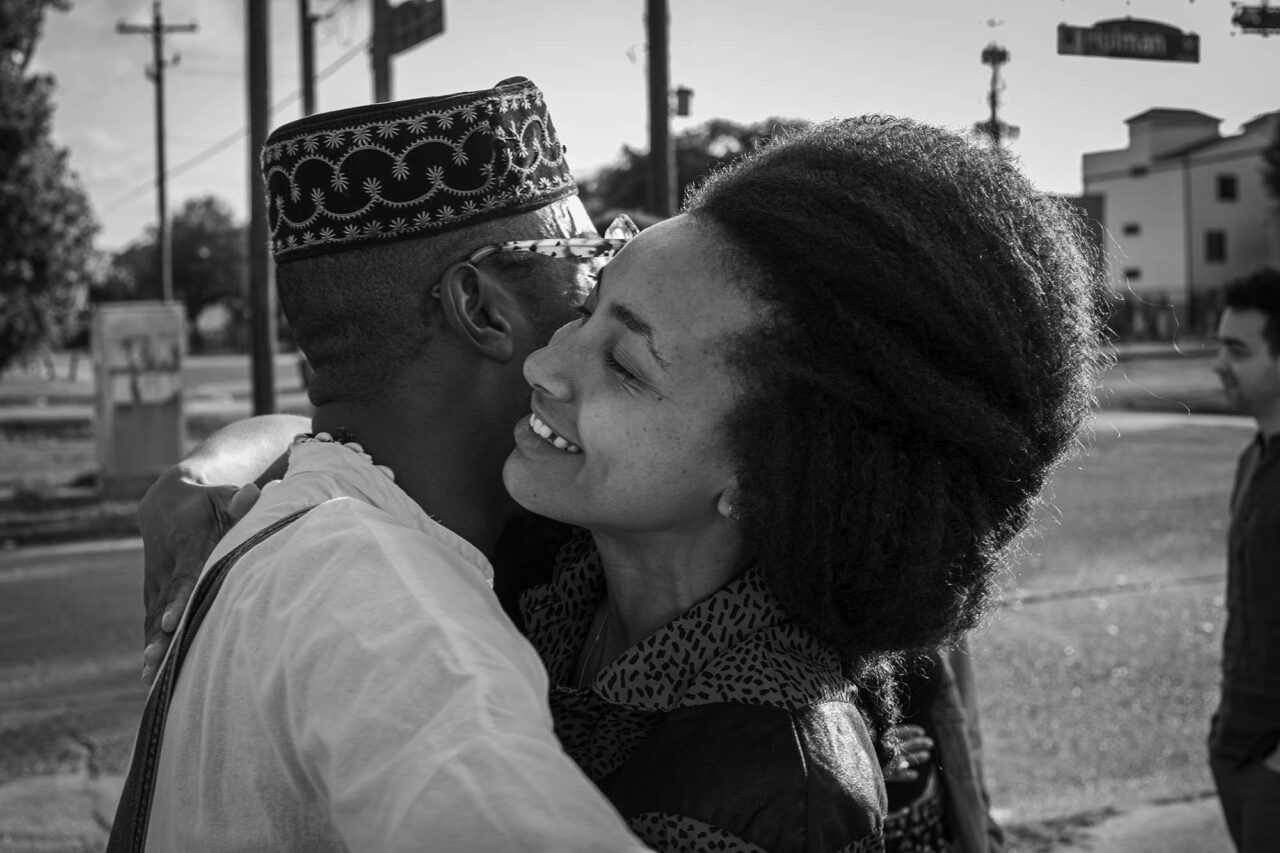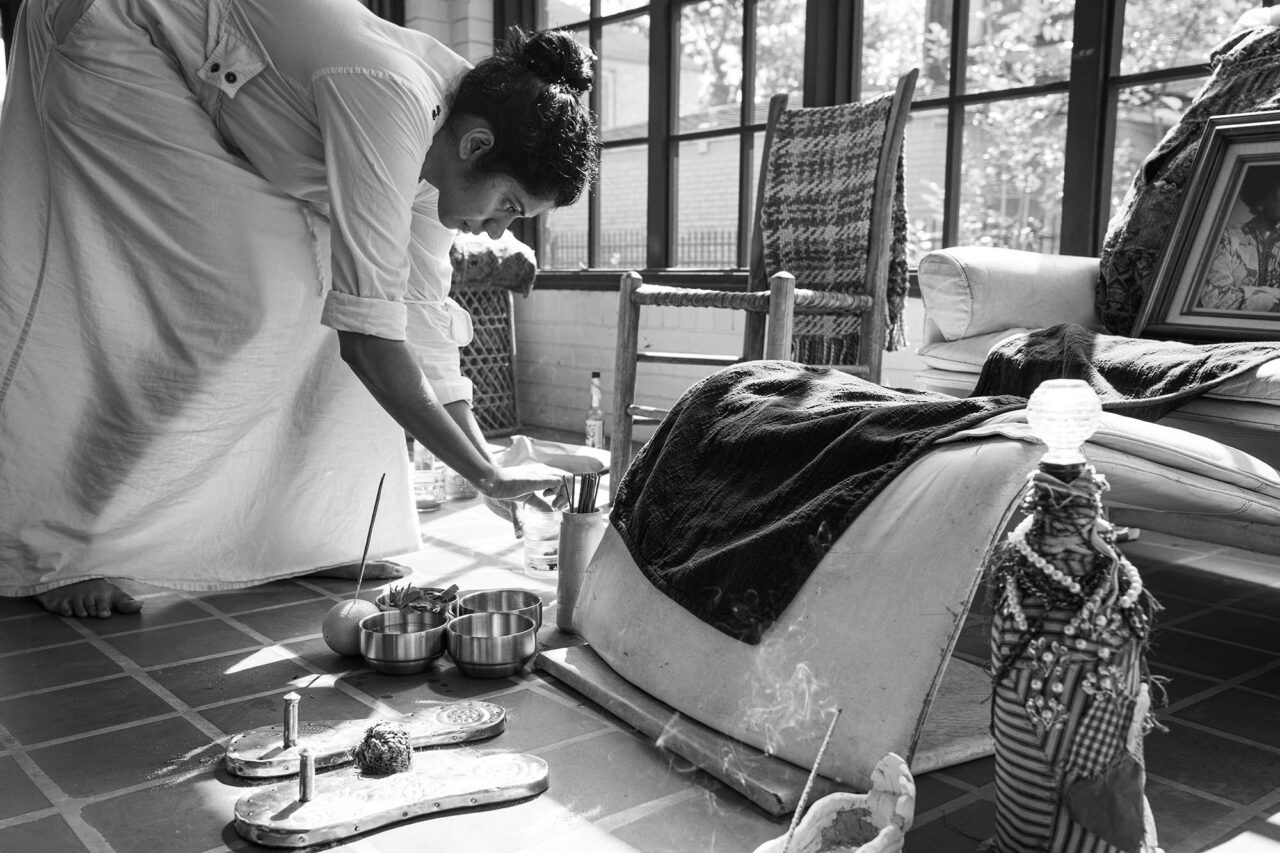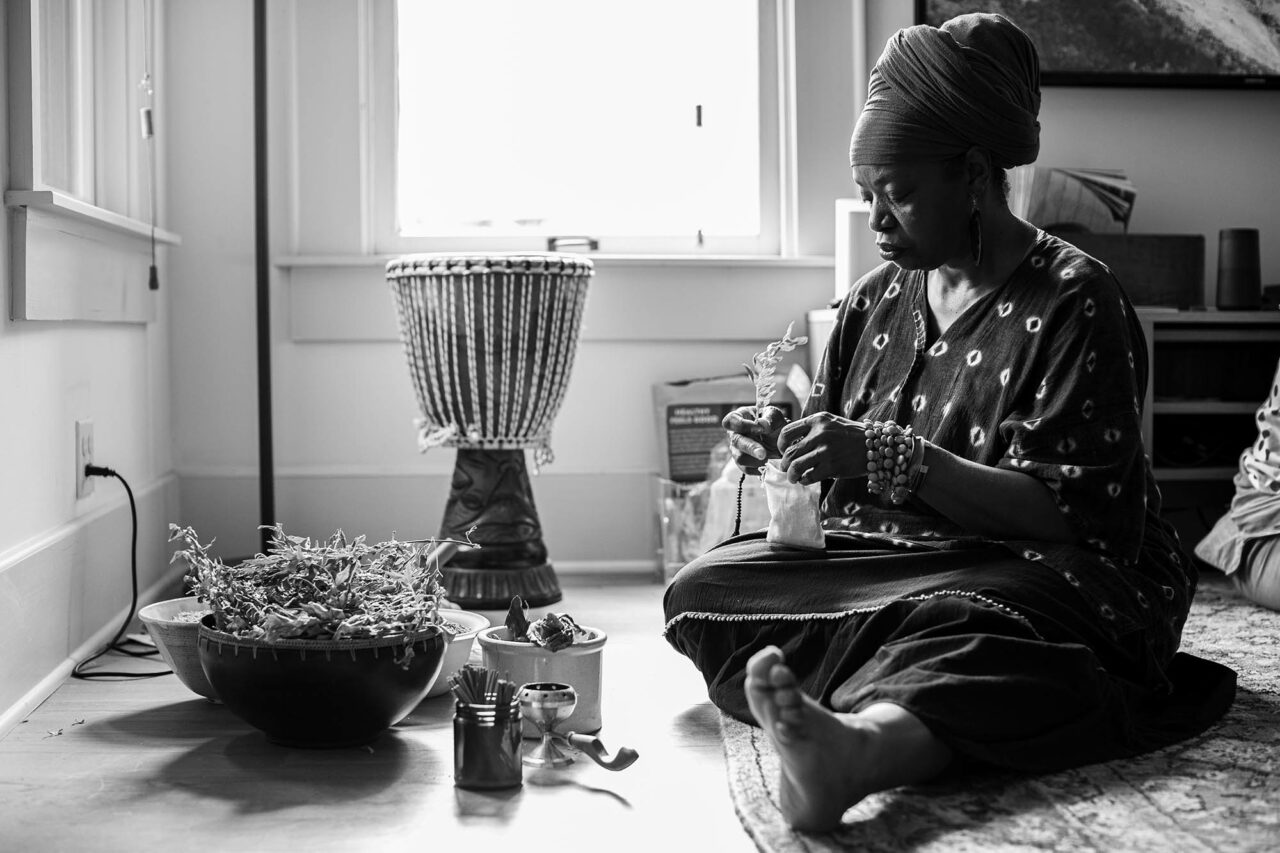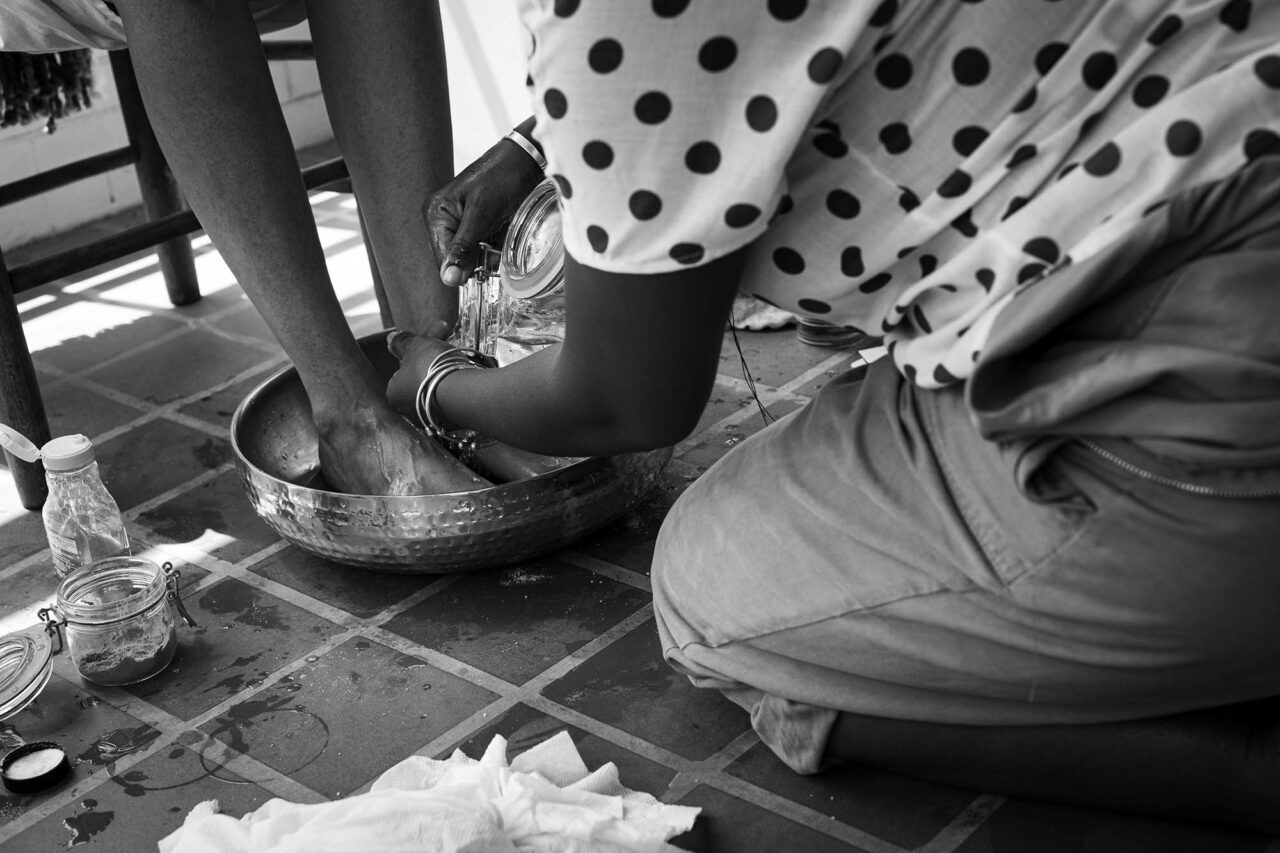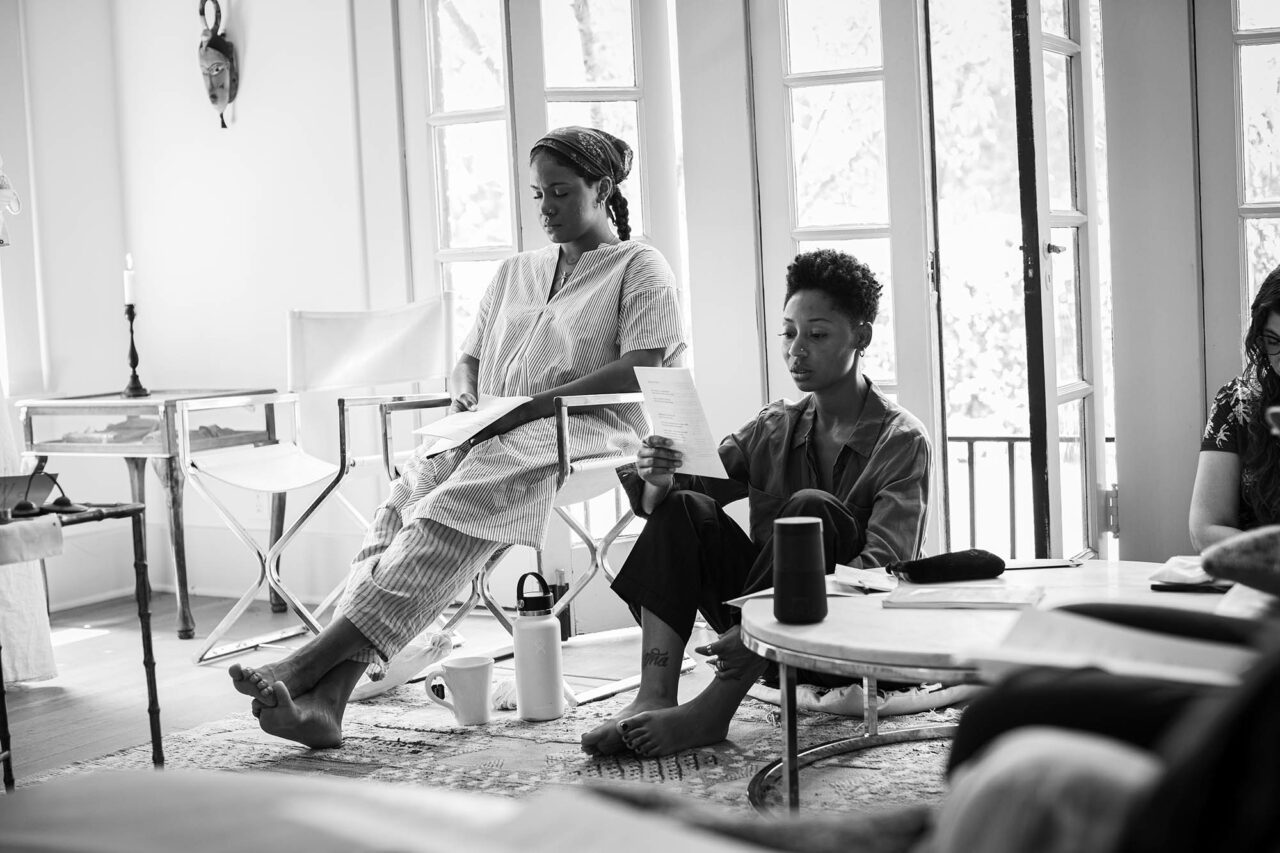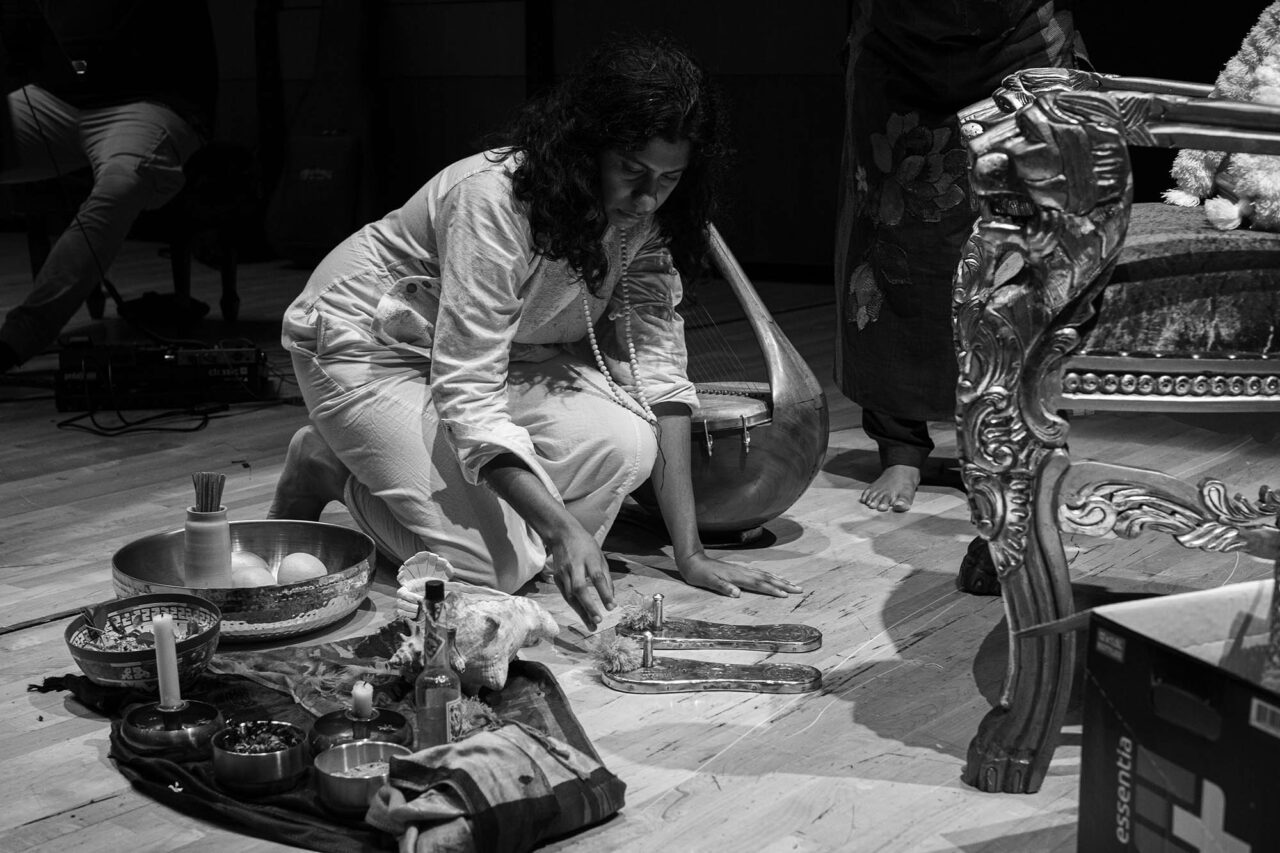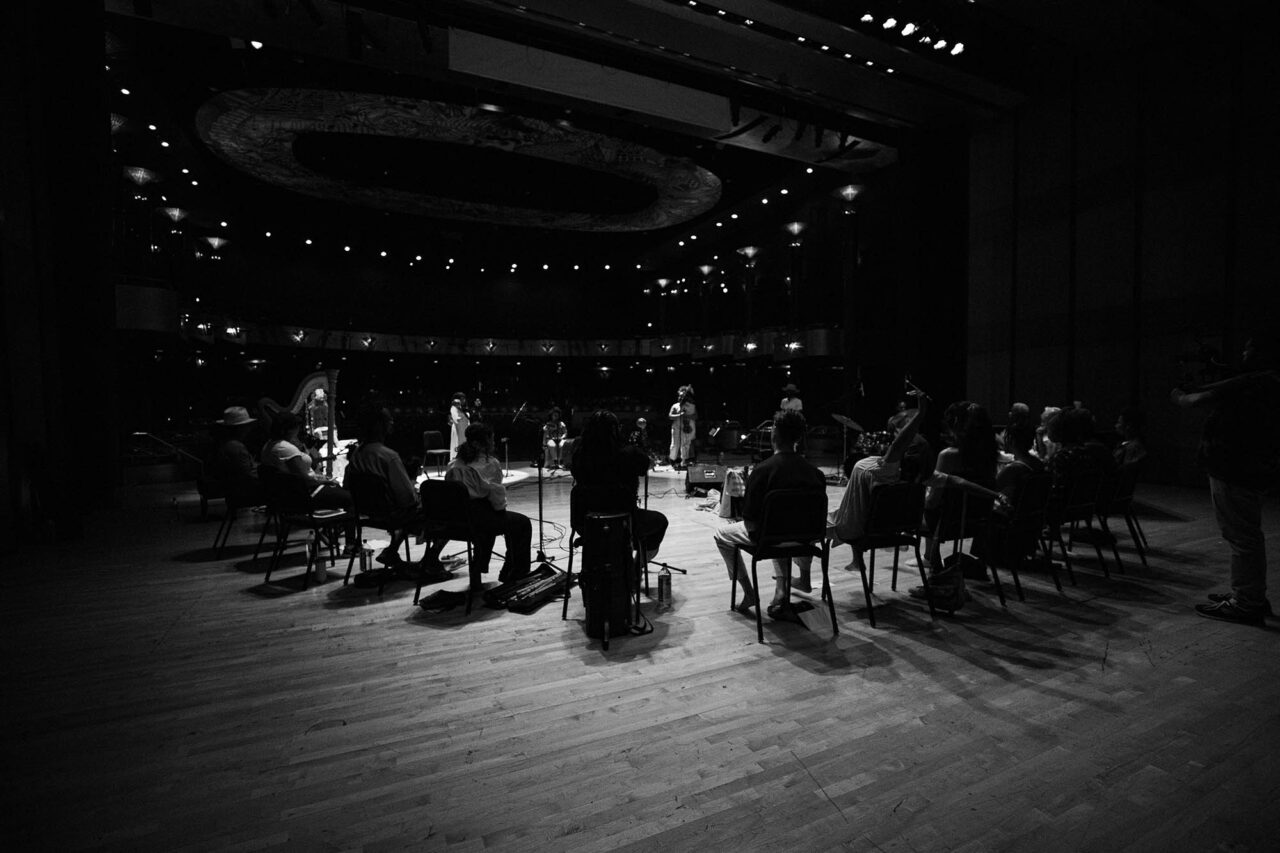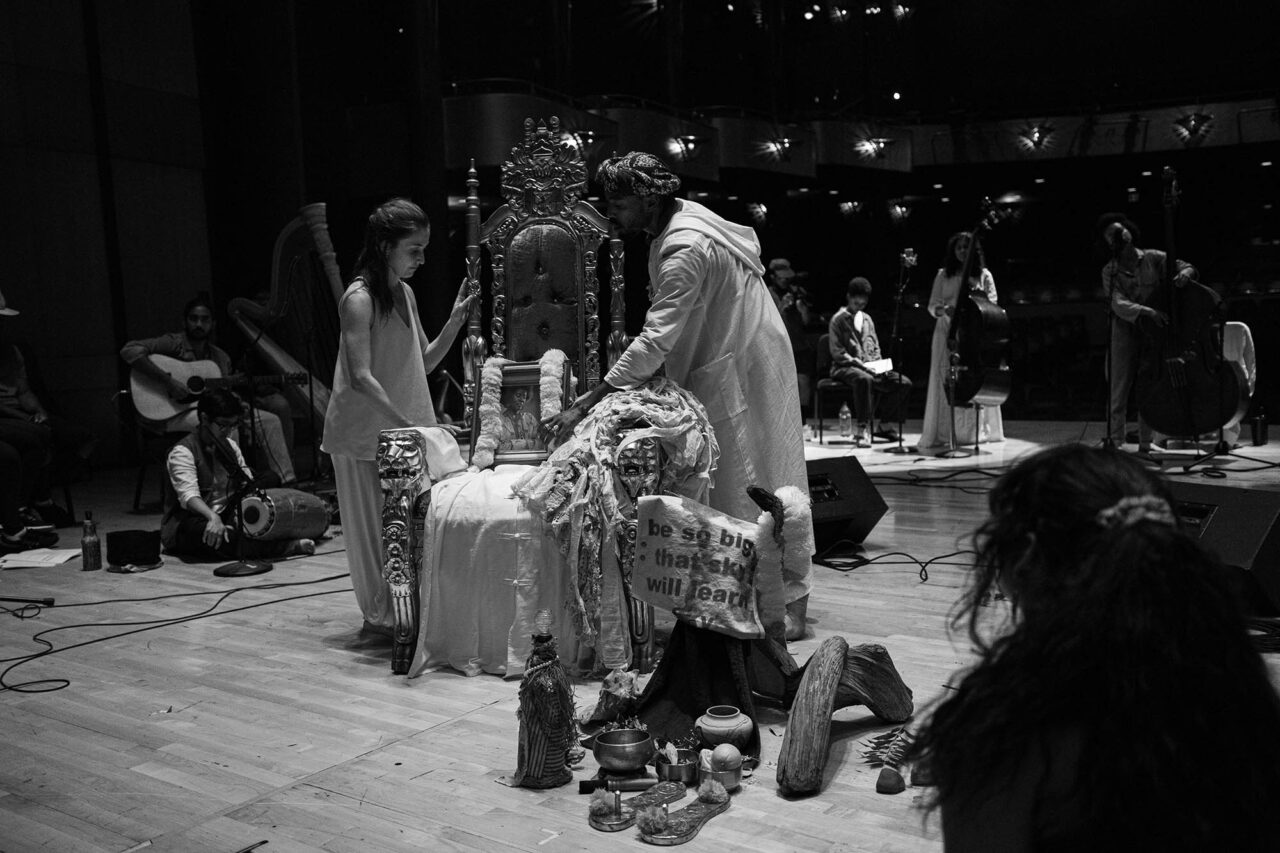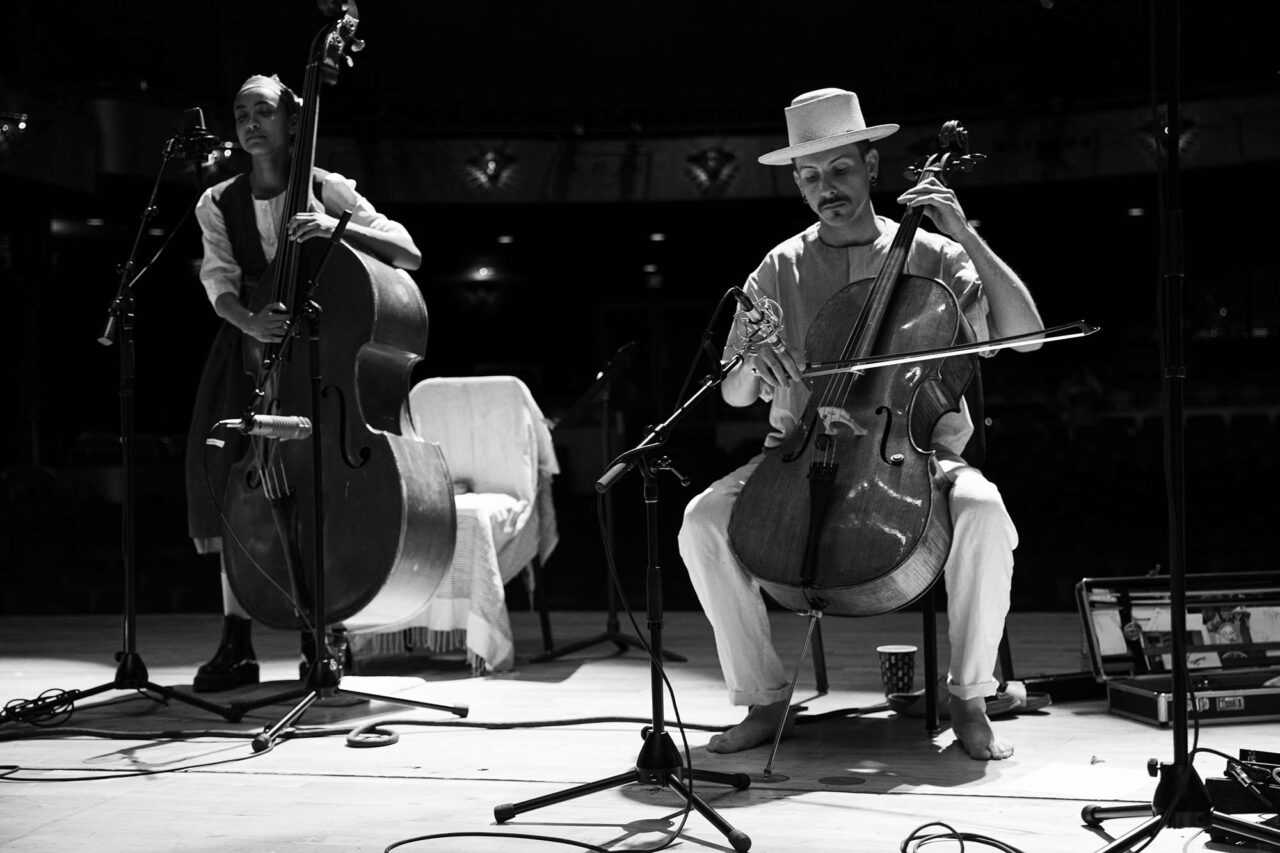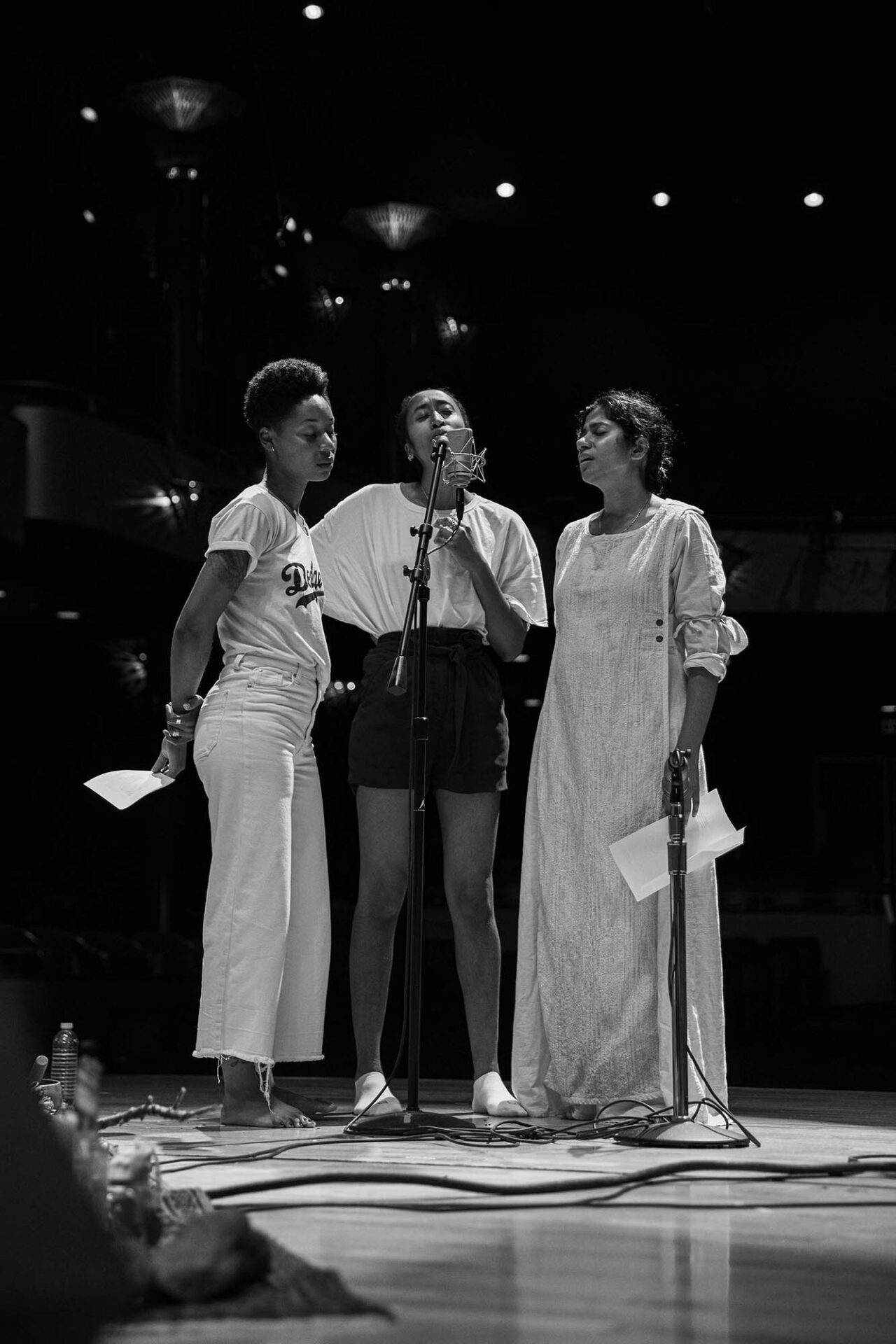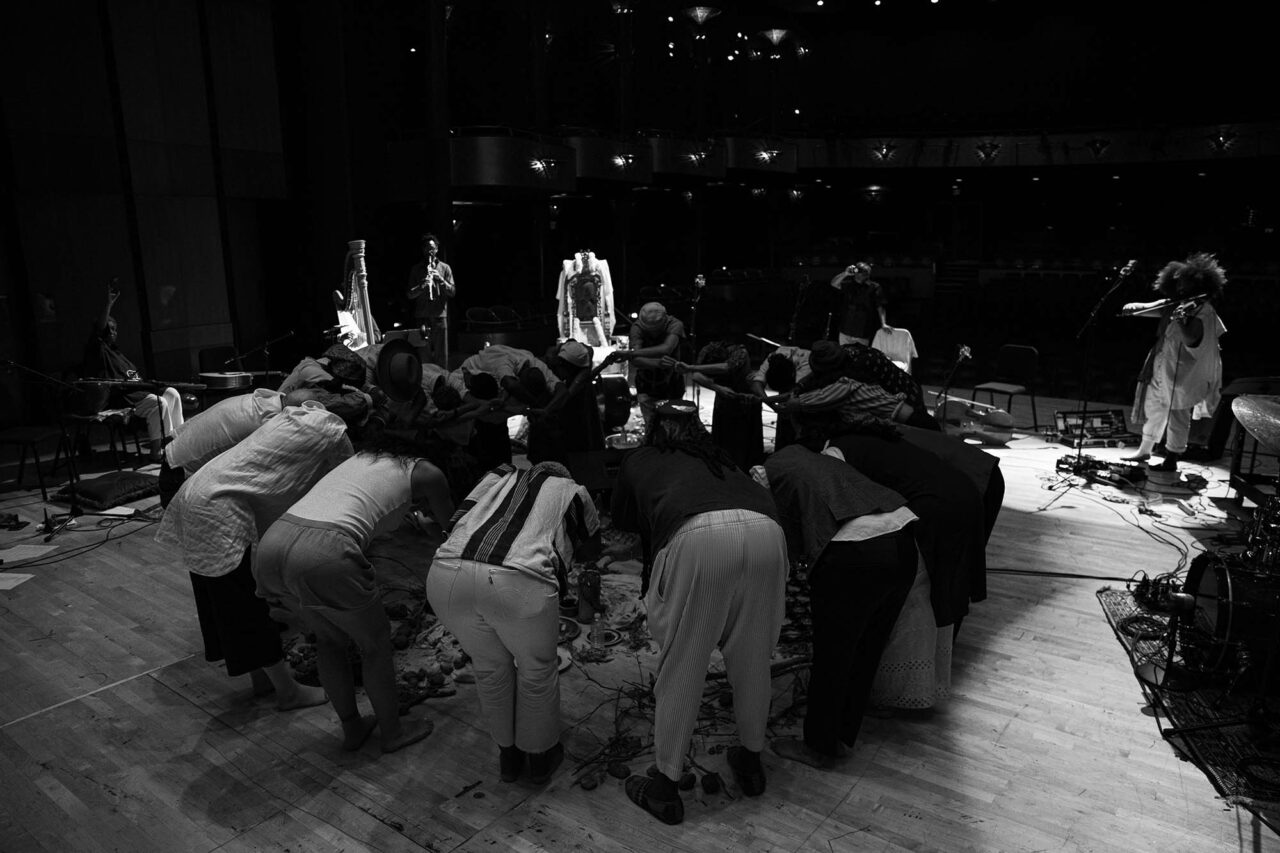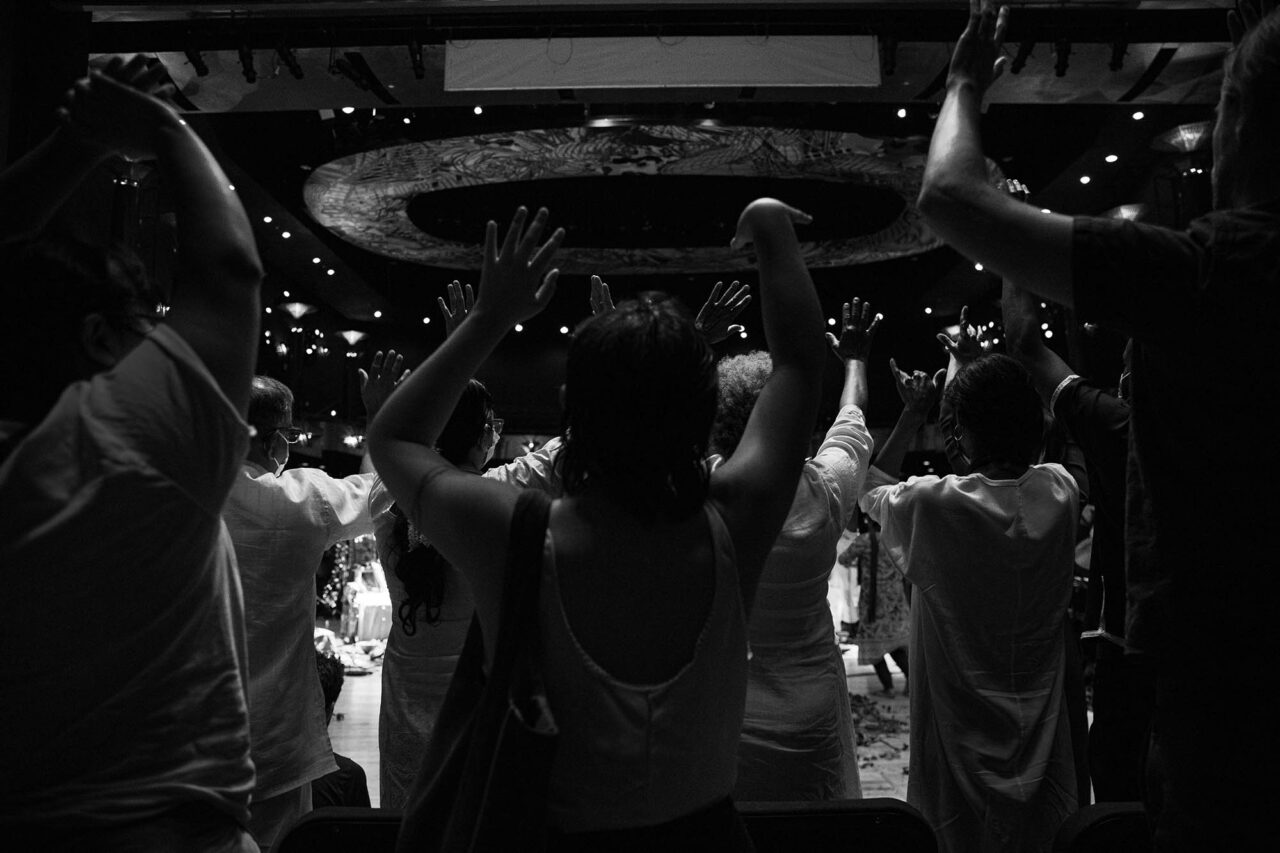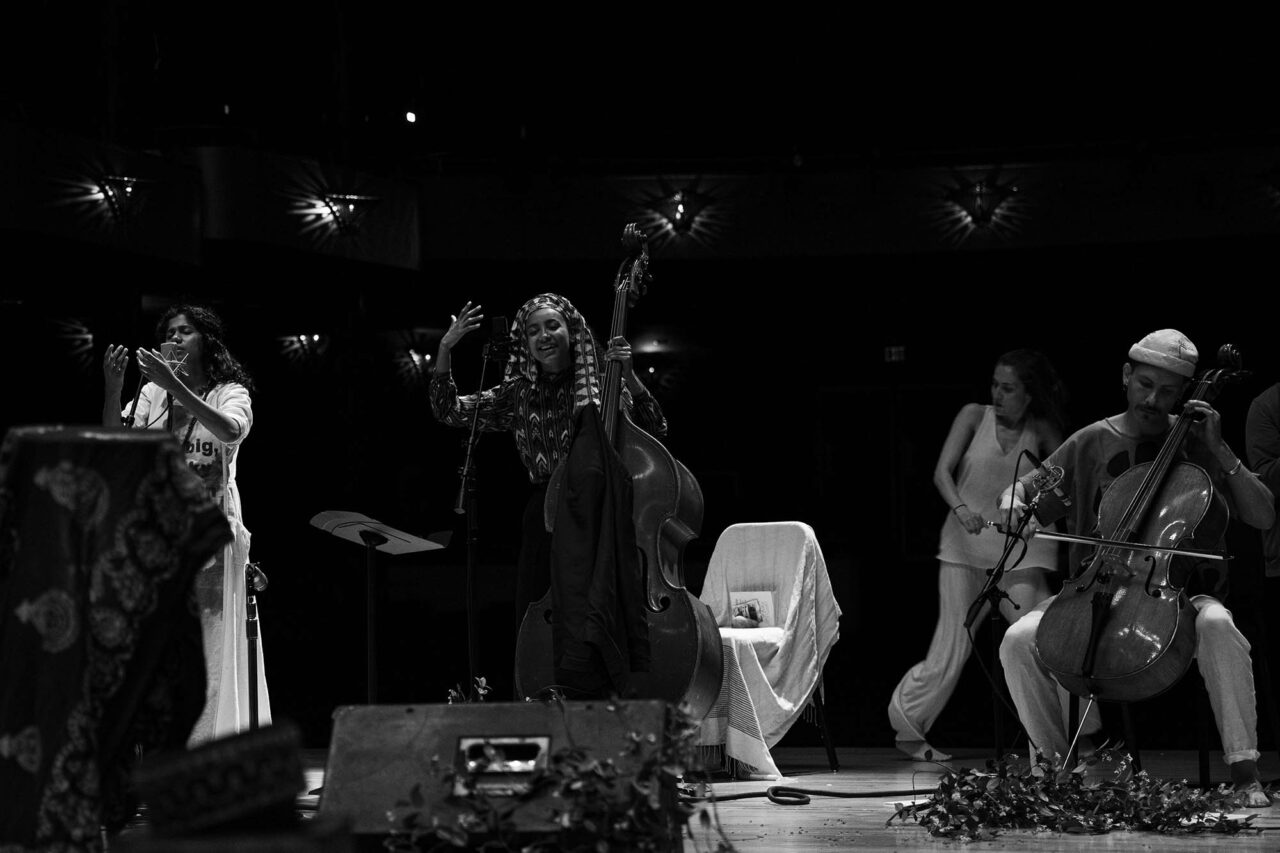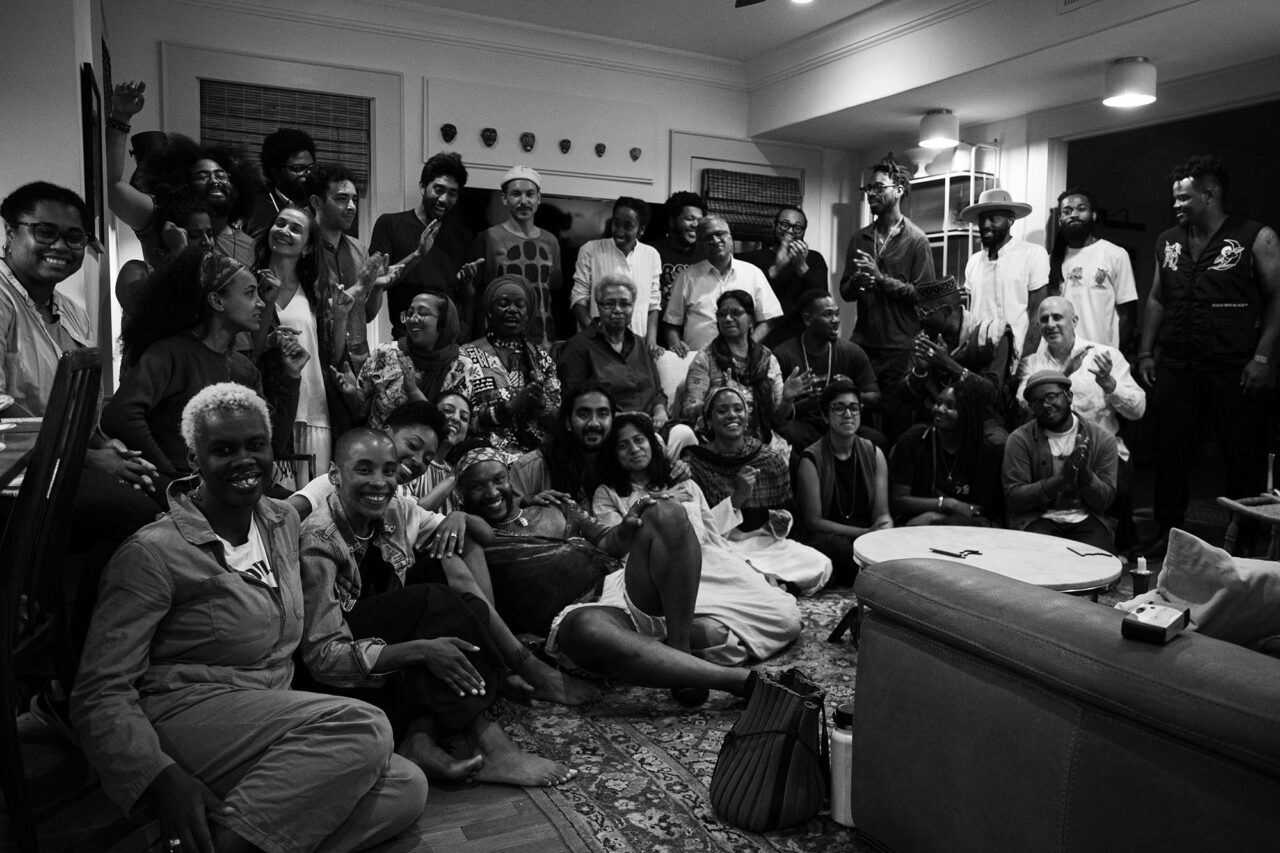Spi/rituality: a stylized term Ganavya uses to describe how rituality lives in and serves spirituality, and how spirituality exists with the support of rituality.
Multi-disciplinary artist, vocalist, and scholar Ganavya Doraiswamy leads a life of nonlinearity, and singularity. She has created an inside library of spi/ritual outlines that have been passed down to her by myriad collaborators from diverse eras, a library that allows her to continuously anchor herself in the past, present, and future. Born into a family of performing artists, Doraiswamy moved from the United States to Sengottai, and then Chennai, South India to begin classical music training at the age of seven. At times home-schooled, Doraiswamy’s arts training continued in the performance of Bharata natyam, jal tarang, harmonium, veena, taal, and harikatha with her family. As phrased by The New York Times, “Ganavya’s voice is a thick ephemera, like smoke as dark as ink, just coming off the fire.”
What has now become a protracted, prodigious project, Daughter of a Temple started off as a 56’51” composed piece for two loudspeakers that drew from Alice Coltrane Swamini Turiyasangitananda’s Monument Eternal, as premiered in the 13th Havana Biennial for Carrie Mae Weems’s The Spirit That Resides. This project follows the transdisciplinary summoning of a village to Houston, Texas for a week-long spi/ritual prayer-festival called Daughter of a Temple that took place in 2022. Here, all chosen participants were invited to sit in the togetherness through word, a gathering which culminated in a grand performance piece that has been documented for posterity.
We may commonly know the word ‘anthology’ as a published collection of text. But it comes from Greek as in: anthos, ‘flower,’ and legein, ‘to gather.’ To gather flowers. At the heart of it, Ganavya interprets this anthology as a collection of flowers, an offering, to be placed at the altar of rememory, of belonging, of ongoing prayer.
This book will encompass a multitude of expressive forms, conveying participating artists’ specific relationship to the page and the book as a format that disseminates ideas and feelings. Together, the contributors will combine into a prayer across time with words. This anthology of expressive textual formulations is a gathering, a village, a ritual, a prayer, a veneration of Alice Coltrane Swamini Turiyasangitananda.
Artist contributors may offer flower/s in any form they so wish, whether in terms of an essay, a reflection of the experience, a sketch, an interview between them and Ganavya, a study of elder Alice Coltrane Swamini Turiyasangitananda’s music, a text score for dance, or even a piece that they write in their mind, but never submit to be printed.
